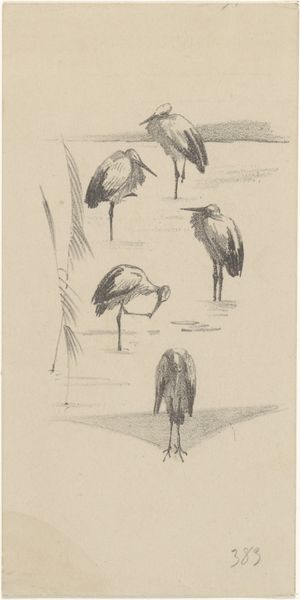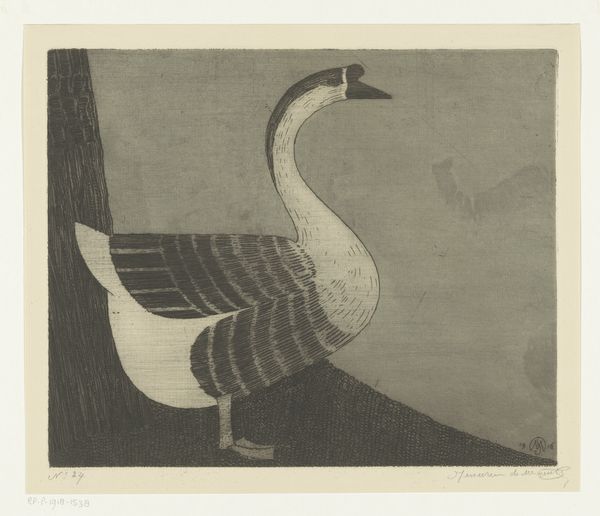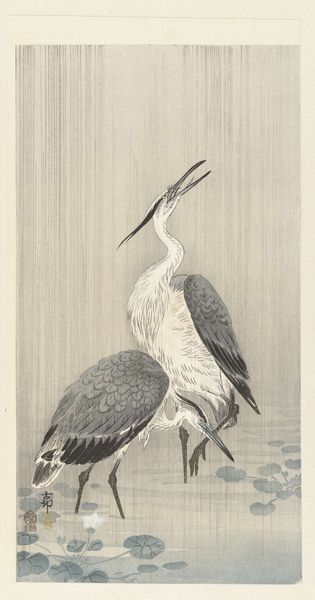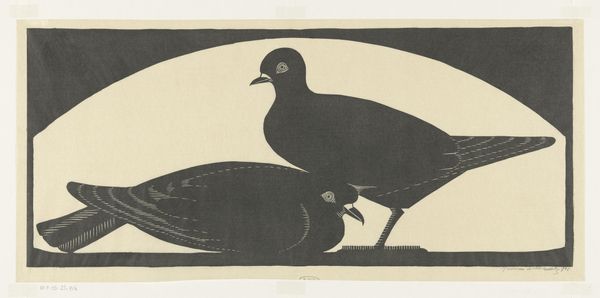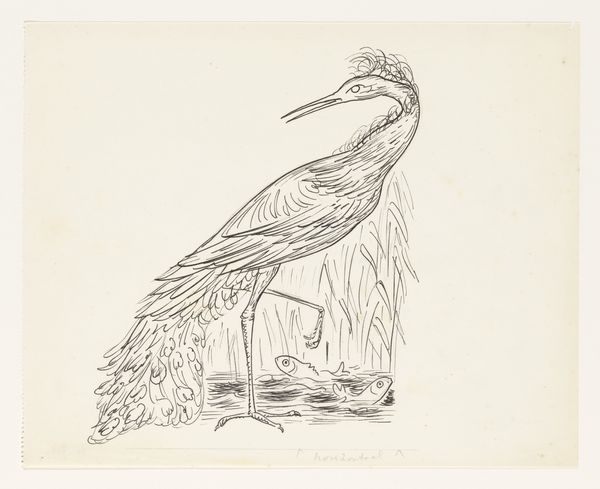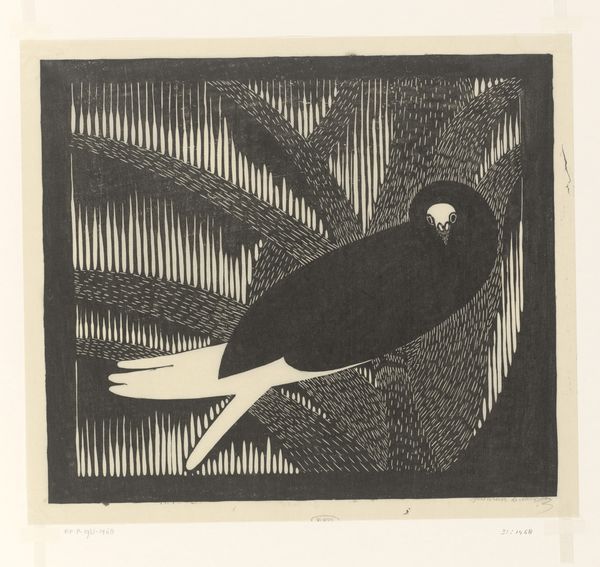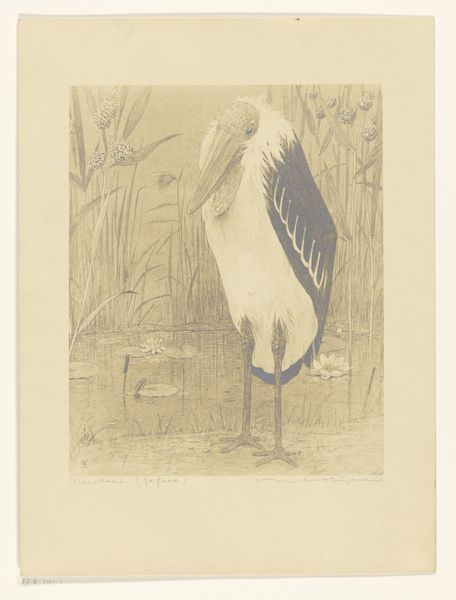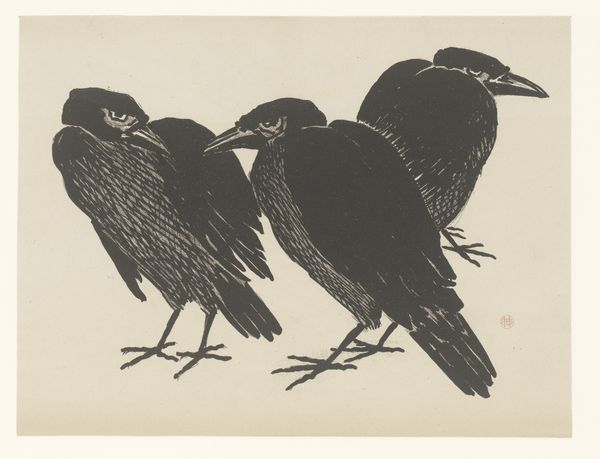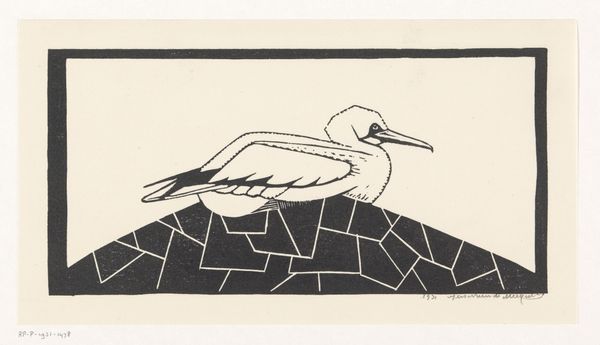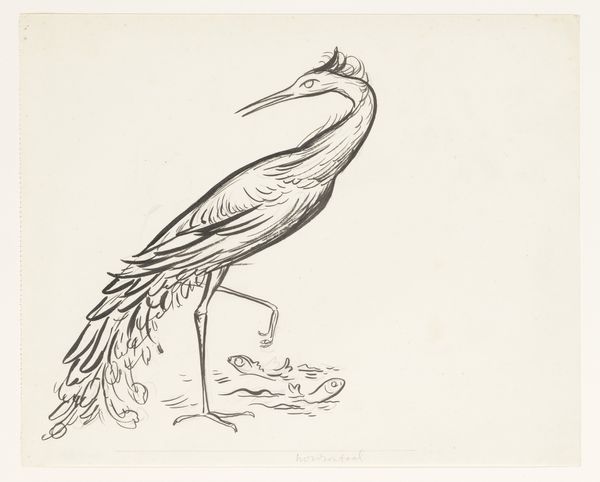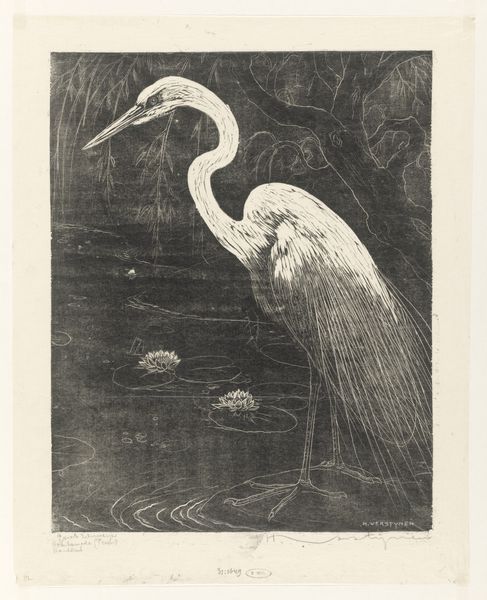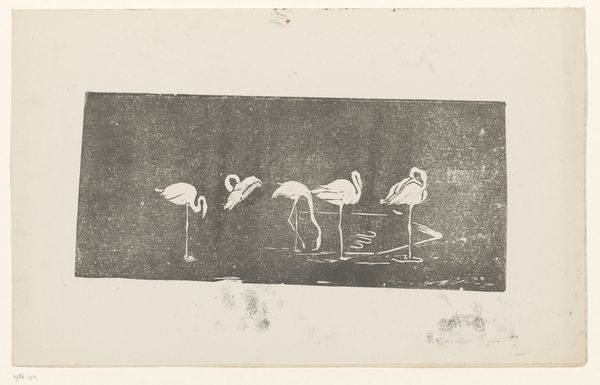
graphic-art, print, woodcut
#
graphic-art
# print
#
expressionism
#
woodcut
#
abstraction
#
line
#
modernism
Dimensions: height 297 mm, width 393 mm
Copyright: Rijks Museum: Open Domain
Editor: Here we have "Two Marabous," a woodcut by Samuel Jessurun de Mesquita, created around 1914. The stark contrast and graphic style are really striking, it reminds me a bit of German Expressionism. What social or cultural commentary might be embedded in this image? Curator: That’s a perceptive observation about its stylistic connections. But consider the context: Mesquita, as a Jewish artist in pre-war Europe, faced increasing societal pressures. While not explicitly political, the choice of depicting animals, particularly those often seen as scavengers like marabous, could be interpreted as a subtle commentary on marginalization. The stylized, almost abstracted environment further isolates these creatures, doesn't it? Editor: That's fascinating. I hadn’t thought about the symbolism of the birds themselves or their potential connection to Mesquita’s own experiences. Were animal depictions a common outlet for expressing sensitive social themes at the time? Curator: Absolutely. Think about how caricature was used in political cartoons. Animals often served as proxies, allowing artists to address complex issues without direct confrontation. The Rijksmuseum’s own collecting practices would reflect this. They have numerous examples where animals represented human characteristics or social classes. It’s also worth noting the influence of colonial exhibitions featuring exotic animals, which brought these creatures into the European visual vocabulary. Editor: So the act of depicting these particular birds, in this specific style, speaks volumes about the art world and society of that era. I now notice the visual language connecting to the experience of societal 'othering.' Curator: Exactly. Art, particularly in times of social upheaval, becomes a mirror reflecting not just what we see, but also the unspoken tensions beneath the surface. Editor: That gives me a whole new way to approach this artwork. Thanks so much for sharing your insight!
Comments
No comments
Be the first to comment and join the conversation on the ultimate creative platform.
